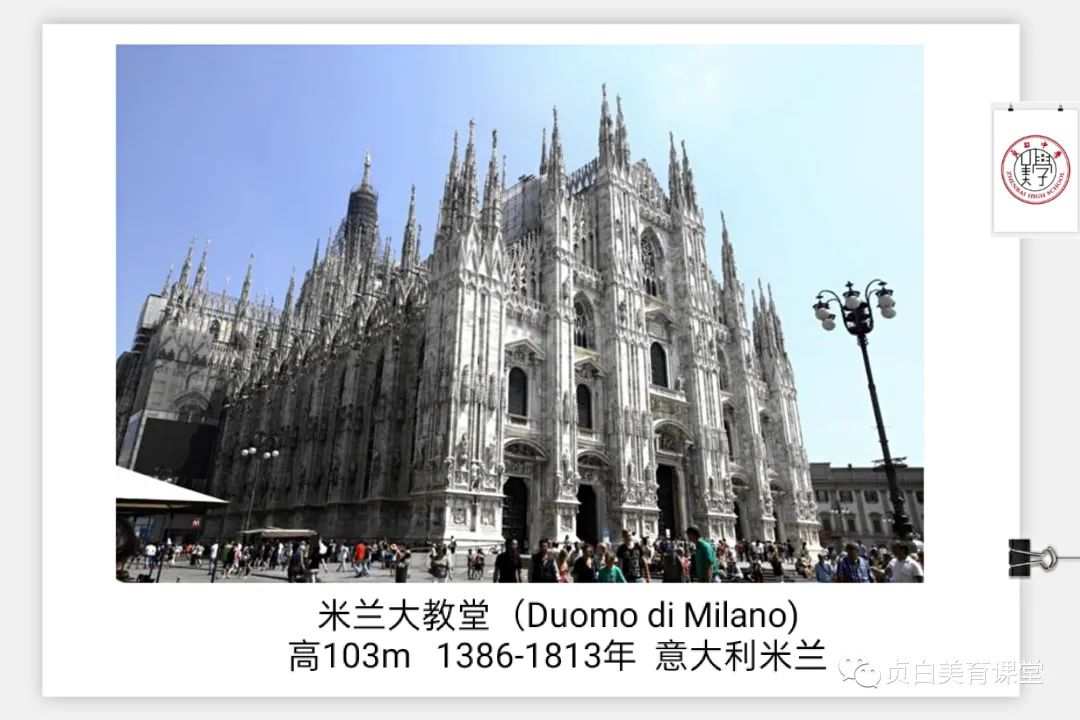When it comes to Gothic style, the image that comes to mind is usually a little “dark”.
Gothic architecture, the architectural style of this spire, was not the artistic aesthetic preference of architects at the beginning, but the natural trend of architectural technology.
Norman architecture is the predecessor of Gothic architecture.

It was not until 1154 that it was peacefully taken over by the Plantagenet Dynasty.
Therefore, the walls of Gothic buildings do not need too many thick bricks and stones.
This practice replaces the backward structure of wooden roof.
At that time, the Germanic people in the North invaded the Roman Empire, which led to the demise of Western Rome, and established the East Gothic Kingdom and the West Gothic kingdom.
The famous churches with dome include the Notre Dame Cathedral in Florence, St.
In 1066, William, Duke of Normandy of France, conquered Britain and opened the rule of the Norman dynasty in British history.
If such a dome was placed on the top of the church, what could better symbolize heaven? Unfortunately, I can’t make it! The French in the North couldn’t wait, so they took the lead in creating Gothic architecture.
Elements such as terror, supernatural and even decadence are related to “Gothic”, such as gothic music, Gothic literature, Gothic makeup and so on.
The designers of Norman architecture came up with the so-called “rib arch” technology, which can be simply understood as the method of “building the beam skeleton first, and then filling the roof with light materials”.
Spires are so-called “Gothic” churches, while dome churches are mainly Renaissance and Baroque churches.
Because the Roman Pantheon has always been the most noble and perfect paradigm in the aesthetics of classical architecture: the ancient Greek forehead square and column, coupled with the huge spherical dome, with a diameter of 43.5 meters.
After William became king of England, he built a large number of church buildings.
Due to the use of large-area glass, the interior of Gothic church feels very transparent.

“Gothic” is a tribe among the Germanic people in the north, which is a saying that Italians ridiculed the rustic style of the northerners.
Gothic is a term invented by Italians to describe this architectural style.
In short, they can be imagined as multiple arms growing from the ground to hold the wall and bear the lateral thrust caused by the high roof.
The internal feature of Gothic architecture is that many “ribs” can be seen on the roof and walls (as shown below).
The center of the dome is hollowed out, and the light shines directly from the middle of the dome.

If the concrete technology had not been lost, Gothic architecture might not have appeared at all.
Like “Baroque”, it is also a derogatory term.
This stereotyped cognition is actually a great misunderstanding of Gothic architecture.
At that time, people believed that the structure of heaven was a perfect sphere.
In order to solve this problem, Norman architecture (also known as Roman Architecture) was first born.
Not only the roof, but also the walls are built in this way.

They can even replace large-area walls with huge glass.
Gothic architecture can give people a gloomy and terrible feeling, which is not incomprehensible.
Compared with ancient Roman churches, Gothic churches give people a completely different visual experience.
The churches in ancient Rome were very compact, giving people the feeling of being conservative and like a safe Fortress (as shown below); The Gothic church is very light, the light penetrates through the colored glass, and the interior is transparent and colorful, just like the heaven scene described in the Bible, making the believers seem to be in the arms of Christ.
Gothic architecture adopts this idea close to modern architecture.
Isn’t modern skyscrapers wrapped in all glass structure? Gothic architecture is characterized by sharp arches and flying buttresses.
This is indeed a religious aesthetic choice, but the premise is that it can be done technically.
In ancient Europe, no matter how small, poor or remote a place is, the highest and core building must be the local church, and various organs and facilities in the town are also built around the church.
Paul’s Cathedral in England, etc.
The wooden structure was easy to catch fire and lacked a sense of solemnity.
But too high a roof can also have problems – the roof is too heavy and the lateral thrust on both sides is too large to be stable.
However, the idea of modern architecture is to build a “skeleton” with steel bars and then pour concrete to fill the “meat” of the building.
Flying buttresses are used to solve this problem.
Peter’s Cathedral in Vatican, St.
The higher the spire, the closer it seems to be to God.
As mentioned earlier, the roofs of the earliest basilica churches were all made of wood.
In the idea of building a house, the most direct is the simple bungalow idea: stack it layer by layer with bricks.
So far, modern architectural thought has appeared from Norman architecture.
Famous steeple churches include Milan Cathedral in Italy, Cologne Cathedral in Germany, Stephen Cathedral in Vienna, the capital of Austria, Seville Cathedral in Spain, etc.
Gothic architecture Norman architecture’s idea of “building a frame with columns and ribs, and then filling in light materials” was applied to the whole building.
From a distance, Gothic architecture looks like a skeleton lying on the ground with the shape of a hedgehog and the flying buttresses rising from the ground.



It is a shining pearl in the history of architecture.

In the millennium of the middle ages, the concrete technology of ancient Rome has been lost, and people can no longer build a perfect spherical dome like the Roman pantheon.
Italy did not bow to the “barbaric” Gothic style until the emergence of an “amateur” architect in the early 15th century..
Gothic style originated from French architecture in the 11th century.


If you look at European churches alone, they can be divided into two architectural styles, one is the church with a spire and the other is the church with a dome.

It can be considered as the bud of the Renaissance in the northern region earlier than Italy.




